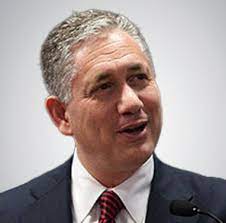In the realm of healthcare innovation, few figures possess the depth of insight and expertise as Stuart Piltch, a distinguished authority on healthcare policies. His perspectives on decoding the regulatory landscape of telemedicine offer a comprehensive view into the challenges and opportunities presented by this transformative technology.
As telemedicine continues to redefine the way healthcare is delivered, understanding the regulatory framework becomes paramount. Stuart Piltch insights underscore the complexity of navigating the regulatory landscape, emphasizing the need for a nuanced approach to ensure the seamless integration of telehealth services into existing healthcare policies.
Piltch begins by acknowledging the pivotal role of regulations in shaping the telemedicine landscape. He highlights the diverse set of challenges that arise when attempting to decipher and adhere to regulations that vary across regions and jurisdictions. As the demand for telehealth services grows, Piltch emphasizes the importance of creating standardized guidelines that can accommodate the unique needs of both patients and healthcare providers.
Decoding the regulatory landscape also involves addressing issues related to licensure and cross-border telemedicine consultations. Stuart Piltch sheds light on the complexities associated with ensuring that healthcare professionals can practice across state or national borders while adhering to licensing requirements. This perspective is crucial in fostering a regulatory environment that facilitates telehealth’s expansion without compromising patient safety or the integrity of medical practice.
Furthermore, Piltch delves into the intricacies of data privacy and security. In an era where digital health information is increasingly vulnerable, telemedicine policies must strike a delicate balance between accessibility and safeguarding sensitive patient data. Piltch advocates for robust regulations that prioritize patient privacy and cybersecurity, essential components for building trust in telehealth services.
Stuart Piltch perspectives extend beyond challenges, exploring the vast opportunities that come with decoding the regulatory landscape of telemedicine. He emphasizes the potential for policies to drive innovation, foster collaboration between technology developers and healthcare providers, and create an environment where telemedicine can flourish responsibly.
The article concludes by underlining the collaborative efforts required to shape a regulatory framework that aligns with the evolving nature of telemedicine. Stuart Piltch encourages policymakers, healthcare professionals, and technology experts to work together in crafting regulations that strike the right balance between flexibility and control, ensuring that telemedicine continues to revolutionize healthcare while upholding the highest standards of patient care.
In essence, Stuart Piltch’s perspectives on decoding the regulatory landscape of telemedicine offer a roadmap for policymakers and stakeholders navigating this transformative journey. As the healthcare industry grapples with the complexities of integrating telehealth into established systems, Piltch’s insights serve as a beacon, guiding the way toward a regulatory framework that maximizes the benefits of telemedicine while safeguarding the integrity of healthcare delivery.



